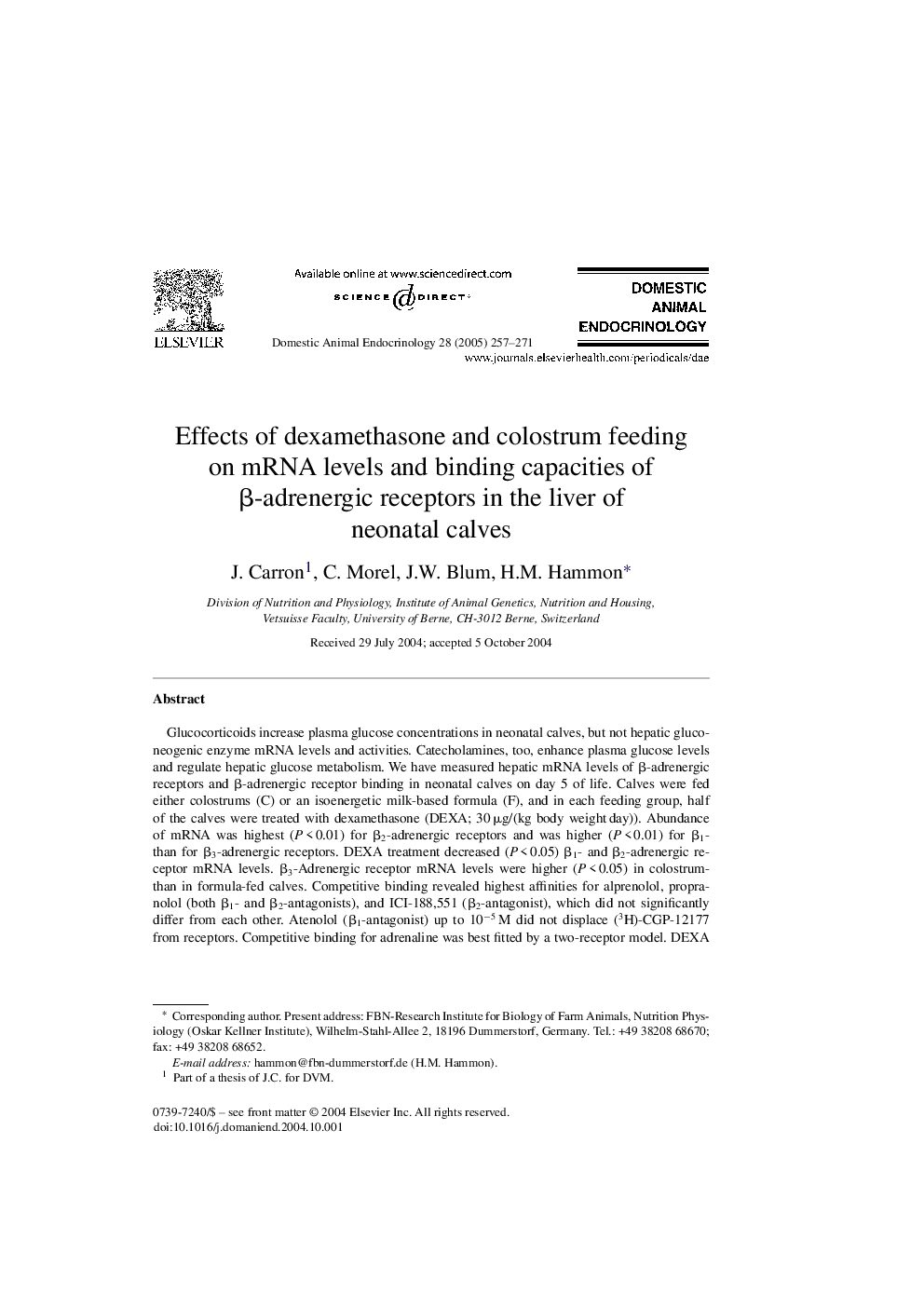| Article ID | Journal | Published Year | Pages | File Type |
|---|---|---|---|---|
| 8967113 | Domestic Animal Endocrinology | 2005 | 15 Pages |
Abstract
Glucocorticoids increase plasma glucose concentrations in neonatal calves, but not hepatic gluconeogenic enzyme mRNA levels and activities. Catecholamines, too, enhance plasma glucose levels and regulate hepatic glucose metabolism. We have measured hepatic mRNA levels of β-adrenergic receptors and β-adrenergic receptor binding in neonatal calves on day 5 of life. Calves were fed either colostrums (C) or an isoenergetic milk-based formula (F), and in each feeding group, half of the calves were treated with dexamethasone (DEXA; 30 μg/(kg body weight day)). Abundance of mRNA was highest (P < 0.01) for β2-adrenergic receptors and was higher (P < 0.01) for β1- than for β3-adrenergic receptors. DEXA treatment decreased (P < 0.05) β1- and β2-adrenergic receptor mRNA levels. β3-Adrenergic receptor mRNA levels were higher (P < 0.05) in colostrum- than in formula-fed calves. Competitive binding revealed highest affinities for alprenolol, propranolol (both β1- and β2-antagonists), and ICI-188,551 (β2-antagonist), which did not significantly differ from each other. Atenolol (β1-antagonist) up to 10â5 M did not displace (3H)-CGP-12177 from receptors. Competitive binding for adrenaline was best fitted by a two-receptor model. DEXA decreased (P < 0.05) (3H)-CGP-12177 binding capacities, whereas binding affinity of (3H)-CGP-12177 was not affected by DEXA or different feeding. Binding sites correlated positively with mRNA levels of β2-adrenergic receptors (r = 0.56; P < 0.01). In conclusion, β2-adrenergic receptors were the dominant subtype in the hepatic tissue. Feeding did not significantly affect β2-adrenergic binding sites. However, DEXA decreased β2-adrenergic binding sites and this was regulated at the transcriptional level.
Related Topics
Life Sciences
Agricultural and Biological Sciences
Animal Science and Zoology
Authors
J. Carron, C. Morel, J.W. Blum, H.M. Hammon,
